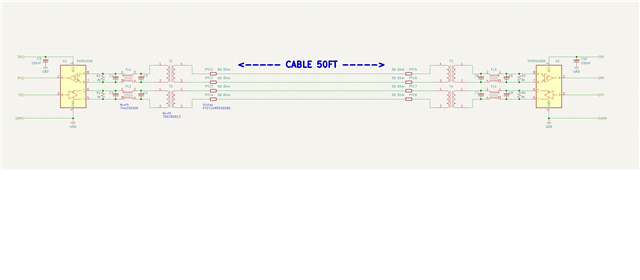Other Parts Discussed in Thread: THS6222, THVD2410
Hello,
I am working on a cable interface for a military device. I plan to use RS485 on the communication lines to increase noise immunity and I've selected the THVD1400 to do the job.
For compliance testing (MIL-STD-461G), this device is going to be subjected to some pretty intense common-mode surges to simulate a lightning transient. The system needs to handle minimum 1500V (voltage pulse) with 0.34us t_rise and 6.4us t_fall. It also needs to handle 2000A (current pulse) with 40us t_rise and 200us t_fall.
I want to add galvanic isolation to the THVD1400 by using a transformer. This type of approach is commonly used to protect ethernet interfaces from transients. I think this approach should work fine for RS485 but I haven't seen anything on the internet to confirm whether or not it will.
Do these transformers pose a risk of distortion for the RS485 communication?
Is there an alternative that might be a superior solution to this problem?
Here is the schematic:





